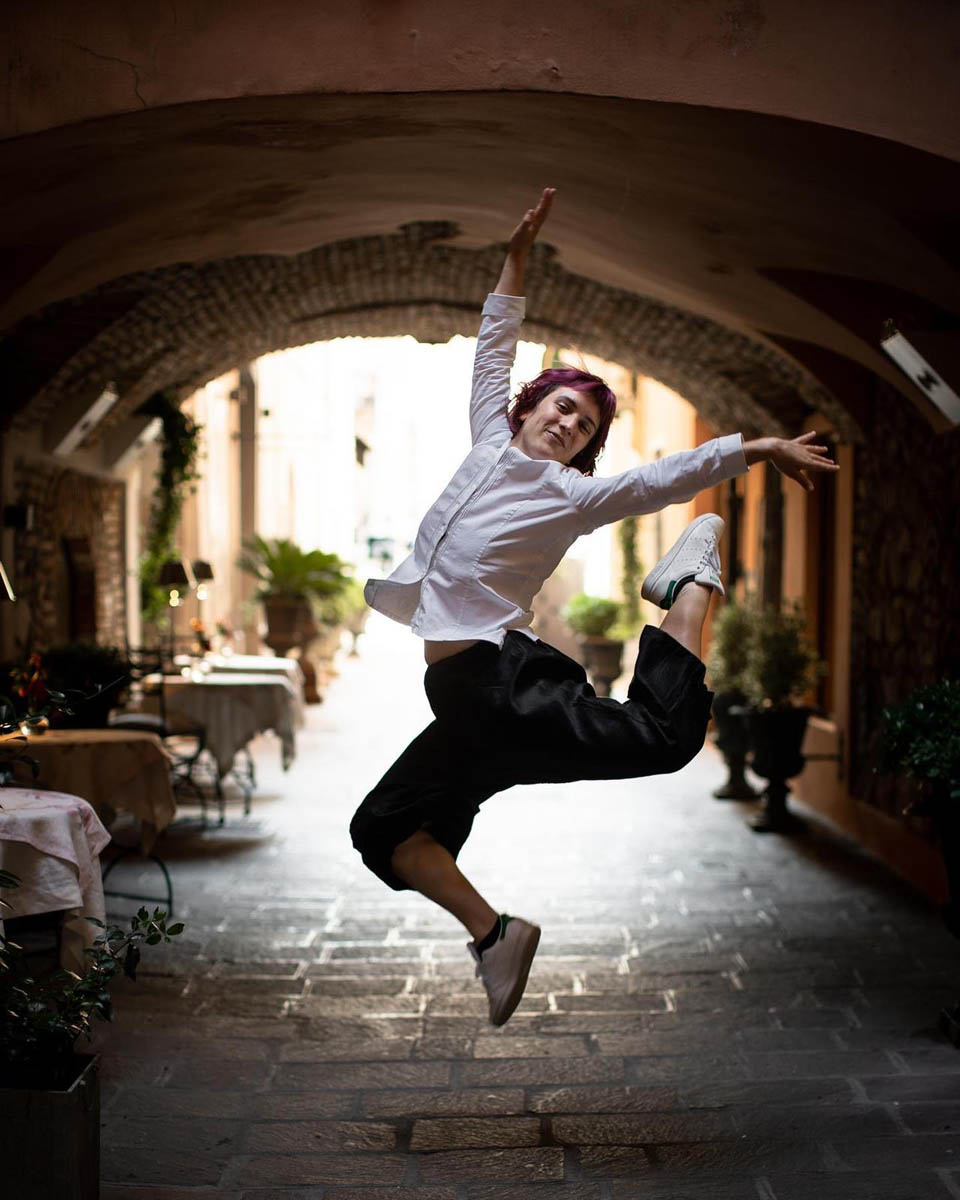Among Italy's most elegant and creative pastry chefs, Annalisa Borella entered the field after a brief career as a professional dancer. A student of Stefano Baiocco, she rose to the top of the culinary world alongside Mauro Colagreco. Now, she enjoys teaching and collaborating, saying, "I don't like the word 'consultant.' My role is to interpret the chef's vision."
The story
"I'm originally from Brescia, but there's a bit of Venetian in me too. We always ate very well at home. Our Sunday dish was stuffed hen with cooked apples and 'pearà,' and for breakfast, we had smoked salmon. It wasn't ordinary for a child. I still remember when my mom went grocery shopping and only bought the best. My dad was a great cook too, and my grandmother had a unique style. I used to make gnocchi with her.

In the end, I attended an art high school because my parents took me to art galleries, and I had the chance to interact with artists like Bruno Munari. It might have seemed boring at the time, but it left something in me. Additionally, I danced from age 19 to 25, and it's something I miss, another way to express my emotions. I worked in the entertainment world, doing contemporary dance, specifically tribal, Balinese, and Japanese. There are still RAI recordings of my performances from many years ago.

I started making cakes when I was expecting my child; I needed something of my own because I couldn't dance anymore. I remembered the time we worked with clay in art school, and cake design was in vogue. I began playing with fondant. I made a cake with Barbapapà for a party with some friends from Rome, and within a few days, a girl who had posted a photo of the cake on social media contacted me and I started receiving requests for more. That's when I took the plunge, and within a month, I found myself wondering what to do with my life since I was in the kitchen from morning to night. At some point, I realized I needed a solid foundation, and at the age of 25, I enrolled in Les Chefs Blancs culinary school. I felt the desire to return home to Brescia and sent my resume to Marchesi, publicly on the restaurant's page. Five minutes later, they called me and asked when I would be ready.

That's how my journey began. I took my child, and we set off. I still search for Marchesi's 360-degree vision, staying grounded. He remains eternal. He had a sweet tooth, but dessert wasn't just an afterthought for him. His school was like being in the kitchen and respecting the ingredients. He truly built culture without frills. Then, I spent a few months at Marchesino, and that's where I connected with Baiocco, thanks to whom I managed to enter Celler de Can Roca, an experience that shook up my ideas.

I was coming from a super classic training with Sacher and meringues cakes, so it was a shock. I stayed as a pastry chef at Villa Feltrinelli from 2014 to 2018, and it taught me not to have boundaries, to truly cook with love, and to pay attention to mise-en-place. Baiocco insisted that when people walked in, they should feel like they were in a tailor shop: everything clean, in order, not a single thing out of place. This sort of discipline helped me organize my thoughts, being the creative person I am. It's thanks to him that I know how to put an idea on a plate.

Finally, there was Colagreco, who was in the brainstorming phase. In a year, I created over a dozen plated desserts, all of which made it into the tasting menu. He'd bring me freshly picked tomatoes from the garden, peas, and say, 'Now, create something.' Without the compartmentalized box I created at Villa Feltrinelli, I wouldn't have succeeded. Afterward, I wondered why not become a pastry consultant, as I occasionally felt the need for a change. Lately, I've been having fun again, thanks to some beautiful collaborations. I never thought I'd be in such high demand. I'm in close contact with kitchen chefs; I enjoy getting into their heads. For almost two years, I've been a training consultant at Perla with Simone Cantafio, but there will be other things coming out soon, at levels I never thought I could access. I also teach Dessert on the Plate at the Alta Formazione in Tione, where we'll have a series of lessons on beer usage and pairings. The format of breakfasts might come back as well.

One of the chefs I work with told me a few days ago, 'You cook.' In the sense that I first absorb the style, then create a customized dessert. Those who work in the lab must understand that they can't just bring their dessert to a chef's menu; they must be in sync. I learned this from Baiocco. Even though I have my favorites: salt, coffee, citrus. Italians are starting to like bitterness, which the English, for example, don't. I used to lean more toward acidity, but now I'm exploring bitterness too. The idea is a complex dessert in all its parts, never cloying. But the worst mistakes are not technical or taste-related; they are found in human relationships. A common request that I am asked during consultancy is to ensure consistency within the kitchen team, where you have to balance hectic rhythms and new needs. That's the challenge today."












